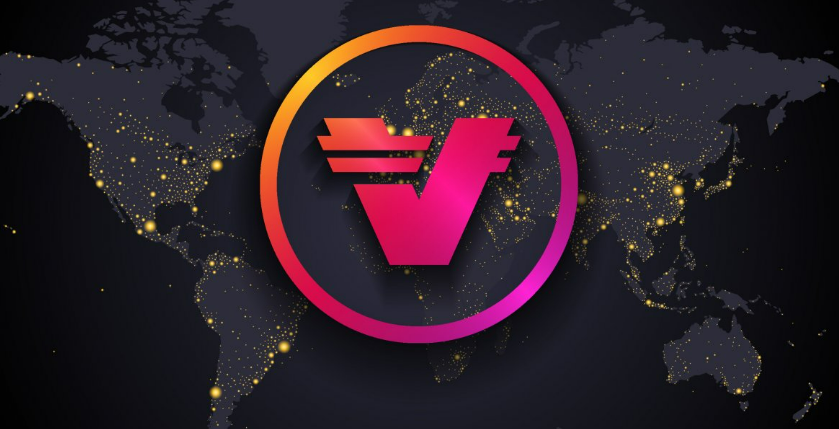
Skylar Williams
Jul 13, 2022 15:31

If you wish to trade options securely, you need to understand what IV crush is. IV crush is simply when an asset's implied volatility is crushed for a variety of investor psychology-related causes. IV crush is the phenomenon in which the extrinsic value of an options contract declines sharply following key business events like as results. Sadly, this decline in implied volatility catches many newcomers to trading options by the crush. The Volatility Crush is typically introduced to beginning options traders by purchasers of stock options prior to earnings announcements.
Implied volatility (IV) is a crucial statistic for gauging market sentiment on the possibility of an asset's price fluctuation. IV is vital for traders who must price options contracts, as it effectively estimates a security's real-time price value while trading.
When purchasing or selling options contracts, investors must take into account two factors: the stock's expected direction and its implied volatility. If IV rises, an option's premium may increase since more implied volatility means the underlying stock may move more within a given period.
Similarly to the market as a whole, implied volatility is susceptible to unforeseen fluctuations. Demand and supply are important determinants of implied volatility. When an asset is in great demand, its price will often increase. Likewise, implied volatility increases, which, given the risky character of the option, leads to a larger option premium.
The contrary is also true. When there is an abundance of supply but a deficiency in market demand, implied volatility lowers, and the option price decreases.
The option's time value, or the length of time until the option expires, further determines the premium. The implied volatility of a short-dated option is often low, whereas the implied volatility of a long-dated option is typically high. The difference lies in the amount of time remaining until the contract expires. As a result of the additional time, the price has more time to reach a positive price level relative to the strike price.
Specifically, "implied volatility crush" refers to a quick, dramatic reduction in implied volatility that precipitates an equally precipitous decline in the value of an option. Typically, a volatility crush follows a scheduled event, such as a quarterly earnings release, new product launch, or regulatory decision.

In this scenario, expectations of a large stock movement were priced into the options contracts (through implied volatility) before the event. After the event, the news is directly priced into the shares, and the "uncertainty premium" is subtracted from the option price.
Prior to initiating a trade, option purchasers should closely monitor implied volatility levels due to the risk of a volatility crush. If volatility is bid up before a known occurrence, options on that stock will be significantly more costly to purchase. Then, if the outcome of the event is not as spectacular as traders had anticipated, the stock price may remain relatively unchanged, but implied volatility (and, thus, the option price) plummets. When the gap between implied volatility and actual stock movement is sufficiently enough, option purchasers might lose money on trade even if the underlying shares are moving in the desired direction.
A number of critical circumstances can cause an IV Crush, but the most common cause is a quick decline in the options premium and the underlying stock price, again as a result of a shift in investors' level of conviction. Investors desire investing certainty, but they nearly never get it. As a result, when earnings reports are issued, IV plummets because investors are considerably more certain about the security's price, and more confidence reduces volatility.
Consequently, fluctuations in the underlying share price and the IV are inversely connected. Consider the following: if the market or a stock price begins to decrease, the psychology of the market shifts, and individuals get more anxious. This results in a spike in volume, maybe as a result of investors purchasing put options as a hedge against the downturn or selling long positions to avert worse losses. In this situation, investors are essentially hysterical.
When market activity grows to this extent, volatility follows behind. And the market is often more volatile when people are panicked, as opposed to when investors feel more at peace when they observe a stock's price slowly rise, hence reducing market volatility.
Still bewildered? Let's utilize a metaphor to provide an alternative explanation. Consider the COVID epidemic. When things are trending in a positive way, the number of fatalities, new cases, and hospitalizations decreases; as a result, people are more at ease and less worried, and the situation is less volatile. But as new instances begin to spike, hospitals begin to fill up, and the number of deaths increases, people begin to fear, making the situation more combustible.
The same process occurs in the market, which is why there is an inverse relationship between IV and the direction of the market or price fluctuations of particular stocks.
Consider the following scenario: your favorite stock is about to disclose results. You purchase a long call because you are certain that the news will surprise investors and cause the stock to climb.
Forward: you are correct! Strong earnings cause a 10% increase in the stock price, but your long call option remains unchanged for the day. How can this be possible? How could a call option be flat (or even down!) on a day when the underlying stock is up 10%?
Suppose the actual change is smaller than the implied move priced into the options. In that case, the drop in implied volatility can considerably reduce the price of an option following the earnings release.
Consequently, despite the fact that the stock moved in the projected direction, implied volatility decreased significantly, causing the option's price to plummet.
You can dodge earnings announcements using automation. (Which you may consider doing after listening to this episode.)
Pricing an option is a complex activity incorporating several variables, such as the current value of an underlying asset, the strike price and expiration date of the option, and the expected volatility of its price as a function of time.
The greater the difference between an option's strike price and its current price, the greater the option's value. This is because the implied volatility of the contract increases as the difference between the two measurements increases. Ultimately, implied volatility is a calculation of how much the market anticipates a security's price to rise until the option expires.
If all other factors remain constant, the price of an option should correspond with its implied volatility, i.e., if IV increases, the option's premium should increase in price, and if IV decreases, the premium should decrease in price.

The idea is that when an IV crush occurs, everyone holding an options contract will incur a loss. The market has shifted from a condition of uncertainty characterized by more volatility to one that is more certain and, thus, less volatile.
Suppose a firm is scheduled to disclose profits shortly, and numerous market players anticipate that actual earnings will exceed current expectations.
In order to profit from this prognosis, market participants purchase a few calls before the announcement.
Similarly, some market players fear that real earnings will be lower than anticipated, so they purchase puts.
In the absence of a consistent picture of the future, there is a rapid increase in demand for both puts and calls, which increases volatility as both sides seek to profit from the news.
Earnings day eventually arrives, the firm reveals its numbers, and the market now has the assurance of the company's genuine earnings.
Consequently, traders quickly reevaluate their positions and determine whether to hold or close them.
As market confidence rises, volatility falls precipitously, resulting in an IV crush and a precipitous collapse in the extrinsic value of options.
This dynamic occurs even when corporate earnings reports are negative since what ultimately counts is not what the outcomes were but rather that there are now results that provide investors with a greater degree of assurance.
The simplest strategy to protect oneself against an IV Crush is to avoid trading options contracts during events that are known to cause a drop in the volatility of an underlying asset.
The most apparent instance of this would be a company's earnings announcement, but there are several additional instances to be cautious of. Some sectors, for instance, are subject to highly seasonal risk factors that might negatively impact their fortunes, resulting in unflattering news stories that can exacerbate volatility and uncertainty.
Other events include significant product launches that have the potential to fail and regulatory decisions that might restrict a company's capacity to conduct business. Political transitions, such as general elections and executive resignations, are also predictable events that might have diverse market effects.
Another consideration is historical volatility and if the implied volatility at a given moment is consistent with past standards. If the IV turns out to be greater than anticipated, it might be prudent to refrain from trading options until the volatility settles down. A covered call might be an anomaly in which a shareholder takes advantage of exceptionally high implied volatility to sell call options that reduce their effective cost basis.

Investors should avoid assuming that an IV Crush poses a hazard to option purchasers or that it presents a lucrative opportunity for sellers. Traders must comprehend that a market can achieve and surpass the anticipated movement. When this occurs, an option's intrinsic value might vary, not only its extrinsic value.
This would be the case if a stock was selling at $100 and the call option for $110 was sold for $5. At the time of the trade, the option's intrinsic value would be $0, and its extrinsic value would be $5.
However, if, after a very impressive earnings beat, the company's shares were to break out to $120, and the $110 call was traded for $11, there would be $10 of intrinsic value and just $1 of extrinsic value.
In this instance, the IV crush occurred, and the projected movement occurred, but the actual amount of the shift surpassed market expectations, resulting in a loss for the seller.
Now that we understand what an Options IV crush is and why it might occur let's explore how to capitalize on it. You likely perceive the chance to go short of these options rather than long at this moment.
The number of options that expire worthless during earnings season is fairly high, and that is why it is so appealing to develop a plan to play the opposing side appropriately. Selling options is the act of shorting an option with the expectation that its value would decrease to zero.
As noted earlier, an immediate 90-99 percent decrease in the value of options might occur the next day. This fall implies that an option seller might earn nearly their whole profit in a single day, often with an 80 to 90 percent likelihood of success depending on the strike price chosen.
IV Crush options can be both advantageous and disadvantageous, and it depends on whether the options are being purchased or sold.
When purchasing options, high implied volatility options attract a steep premium. Traders receive premiums with the expectation that underlying stock prices may fluctuate drastically. Therefore, while purchasing call options, significant premiums are paid in anticipation of a substantial increase in stock prices. When purchasing put options, you anticipate a significant decrease in stock prices. However, once this information is available, IV Crush options substantially affect the pricing of options.
When selling options, traders want to receive a hefty premium. As you may be aware, implied volatility directly impacts the premium generated. Consequently, high implied volatility is a wonderful opportunity to earn substantial premiums when selling options. Therefore, traders sell options before a forthcoming news event in order to get big premiums.
The implied volatility reverts to the mean. Frequently, IV spikes are followed by a return to more typical levels.
When implied volatility is high, the cost of options increases. Similarly, a decline in implied volatility and option price options sellers.
Options traders may profit from IV crush using a number of tactics. We also offer a premade bot template that capitalizes on IV crush revenue.
The fast repricing of options produces a benefit for option sellers if the underlying securities do not move as much as anticipated (which occurs frequently).
Consider the $100 stock in the example given before. If you sold the straddle for $5 and the earnings move was less than $5, you could purchase the position again for cheaper and benefit from the decline in implied volatility.
It is crucial to realize that not all situations with significant implied volatility resolve as anticipated. There is a correlation between volatility and volatility.
Volatility clusters often. What may appear to be an attractive moment to sell options might be the beginning of extended volatility.

In unfavorable market conditions, shorting high-volatility options can be catastrophic. Keep in mind that every option contract has an expiration date. Prolonged periods of excessive volatility may exceed the length of your holding.
Yes, volatility will eventually diminish. However, if it does not occur before expiration, you will be required to buy back the position at a higher price.
When attempting to profit from IV crush, risk-defined techniques, correct position size, coupling high implied volatility possibilities with other indicators, and other risk management measures must be employed.
IV Crush options is a circumstance in which the extrinsic value of options declines significantly following a major news event. For example, the disclosure of company profits or any similar event increases the level of uncertainty among options traders. However, once the incident has gone and uncertainty has decreased, the market returns to normal.
Unknown or insufficient information on an imminent news event increases the level of uncertainty among traders. This uncertainty makes upcoming equities riskier, and implied volatility increases prior to the event. Consequently, the premium for options also increases. However, as soon as the environment returns to normal following the occurrence, option premiums rapidly decrease to reflect the new options. This abrupt and severe change in implied volatility is devastating to traders.
IV Crush options can be both advantageous and harmful. It is advantageous for vendors but potentially negative for purchasers. Therefore, selling options is preferable when a news event is anticipated. Additionally, there are two techniques to avoid being crushed by IV Crush options. Avoid trading options with expiration dates after impending news events. Observing previous volatility closely also aids in reducing losses caused by IV Crush options. If implied volatility is greater than in previous times, it is best to avoid trading options.

Jul 12, 2022 17:08

Jul 13, 2022 17:06